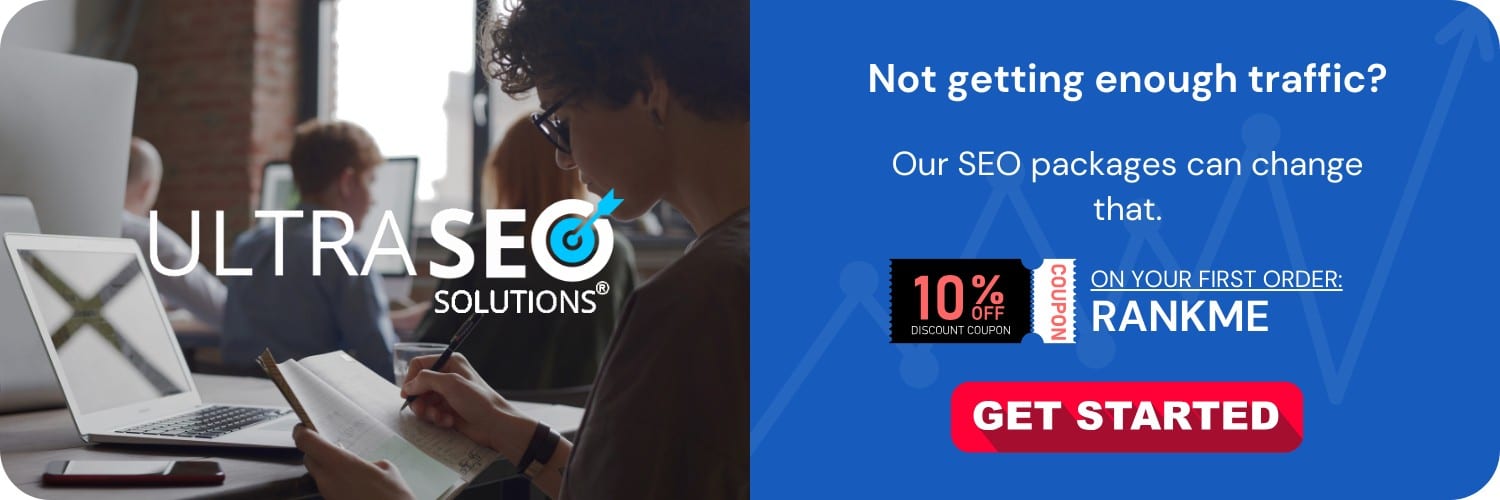
SEO, or Search Engine Optimization, can significantly improve online course visibility and sign-ups by ensuring that your course appears at the top of search engine results when potential students are searching for relevant topics. By optimizing your course pages with targeted keywords, earning backlinks, and creating quality content, you can increase organic traffic to your website and encourage more enrollments. Now, let’s go in-depth and discuss how these strategies and others can be applied effectively to promote your online courses.
Keyword Research for Course SEO
Effective SEO begins with keyword research. Identifying the terms and phrases that potential students are using in their online searches is crucial to aligning your course content with their interests and needs.
Understanding Your Audience
Start by defining your target audience. What are their interests, pain points, and educational goals? By understanding your audience, you can determine which keywords they’re likely to use when searching for courses like yours.
Using Keyword Tools
Use tools like Google Keyword Planner, SEMrush, or Ahrefs to find keywords related to your course topic. Look for keywords with high search volume and low to medium competition. Long-tail keywords, which are more specific phrases, can also be valuable as they often signal a higher intent to enroll.
Incorporating Keywords
Once you have your keywords, incorporate them naturally into your course titles, descriptions, headings, and content. Remember that keyword stuffing can harm your SEO efforts, so use keywords thoughtfully and focus on creating useful, informative content.
On-Page SEO for Course Pages
On-page SEO involves optimizing the elements on your course webpage to make it more search engine friendly.
Title Tags and Meta Descriptions
Your title tag and meta description are vital for attracting clicks from search engine results pages (SERPs). Make sure they are compelling and include your main keyword. A well-crafted meta description can generate a higher click-through rate, driving more traffic to your course page.
Header Tags and Content Structure
Use header tags (H2, H3, etc.) to structure your content, making it easier for search engines to understand the hierarchy and for users to navigate. Use keywords in these headers but keep them clear and descriptive.
Internal Linking
Linking to other related courses and content on your site helps search engines discover more of your pages and understand their relationship to one another. It also keeps visitors on your website longer, which can positively impact your search rankings.
Optimizing Images and Videos
Images and videos can enhance the user experience but make sure they are optimized for fast loading. Use descriptive file names and alt text with relevant keywords for images; for videos, consider adding transcripts to make the content accessible to search engines.
Creating Quality Content
High-quality content is at the heart of SEO and user engagement. By delivering valuable content, you can attract and retain students while also improving your search visibility.
Educational Blog Posts and Articles
Create blog posts and articles that provide insights, tips, and valuable information related to your course topic. This content can attract readers who are interested in learning more about the subject and potentially signing up for your course.
Leveraging Multimedia
Including multimedia elements like podcasts, webinars, and instructional videos can capture a wider audience and encourage sharing, which can enhance your online presence and SEO.
User-generated Content
Encourage course reviews, testimonials, and discussions. Not only does this provide social proof to prospective students, but user-generated content also adds fresh, unique content to your site, which search engines value.
Building Backlinks
Backlinks, or inbound links from other reputable websites, are a significant ranking factor for search engines. They act as a vote of confidence in the quality of your content.
Guest Blogging and Partnerships
Write guest posts for educational blogs or industry websites to earn backlinks and reach a new audience. Partnering with related organizations or influencers can also lead to valuable backlink opportunities.
Creating Linkable Assets
Develop resources like infographics, whitepapers, or comprehensive guides that others will want to link to. These assets can be particularly effective in garnering attention and backlinks from other websites.
Local SEO and Directories
If your course is aimed at a local audience, make sure to optimize your online presence for local SEO. Submit your business to local directories and ensure your NAP (Name, Address, Phone number) is consistent across all listings.
Technical SEO Considerations
Technical SEO involves ensuring that your website’s infrastructure is optimized for search engine crawling and indexing.
Mobile Optimization
With the majority of searches now performed on mobile devices, having a mobile-friendly website is crucial. Ensure that your site is responsive and offers a smooth experience for mobile users.
Site Speed and Performance
A fast-loading website offers a better user experience and is favored by search engines. Optimize your site’s performance by compressing images, using caching, and minimizing the use of heavy scripts.
Secure and Accessible Website
Ensure your website uses HTTPS as a secure protocol. An SSL certificate is necessary not just for security but also as a ranking signal for Google.
Structured Data Markup
Structured data markup, such as schema.org, helps search engines understand your content and provide rich snippets in search results, which can improve click-through rates.
Tracking and Analyzing Performance
Finally, it is essential to track and analyze your SEO performance to understand what’s working and where you can improve.
Utilizing Analytics Tools
Use tools like Google Analytics and Google Search Console to track website traffic, user behavior, and rankings. They provide invaluable insights into your SEO strategy’s effectiveness.
Conducting SEO Audits
Regular SEO audits can identify issues like broken links, crawl errors, or duplicate content that may be hindering your search performance.
A/B Testing for Conversion Optimization
Experiment with different layouts, content formats, and calls-to-action to see what leads to the highest conversion rates for course sign-ups. A/B testing can help fine-tune your SEO and marketing strategies.
Finishing Thoughts
SEO is a powerful tool for increasing the visibility and sign-ups of your online courses. By thoroughly researching keywords, optimizing on-page elements, creating quality content, building backlinks, and monitoring technical aspects of your site, you can improve your course’s search engine rankings and attract more students. Remember, SEO is not a one-time task but an ongoing process that requires continuous effort and adaptation to changing search algorithms and market trends. By staying informed and proactive, you can maintain a strong online presence and ensure that your courses reach their intended audience.
Frequently Asked Questions
What is SEO and how does it relate to online courses?
SEO, or Search Engine Optimization, is the process of improving a website’s visibility in search engines through organic search results. It relates to online courses by enhancing the discoverability of the courses when potential students search for related topics, subjects, or skills they want to learn online. By implementing effective SEO strategies, the online courses can rank higher in search engine results, leading to increased visibility and potentially higher sign-up rates.
How can I choose the right keywords for my online course?
To choose the right keywords, you need to understand your target audience and the terms they use when searching for courses like yours. Conduct thorough keyword research using tools like Google Keyword Planner, SEMrush, or Ahrefs to find relevant and high-traffic keywords. Look for keywords with high search volume and low to medium competition. Also, consider long-tail keywords that are more specific and may attract a highly targeted audience who are more likely to sign up for your course.
What are some on-page SEO techniques to improve my course’s visibility?
On-page SEO techniques you should use include optimizing your titles and descriptions to include target keywords, ensuring high-quality and relevant content, improving the user experience (UX) with a mobile-friendly and easy-to-navigate website, speeding up your website’s loading time, and using header tags (H1, H2, etc.) to structure your content effectively. Additionally, use internal linking to connect various pages of your website, encouraging visitors to explore more content.
How can off-page SEO tactics drive more sign-ups for my online course?
Off-page SEO involves activities done outside of your website to improve its authority and ranking. This can include building high-quality backlinks from reputable sites in the education industry, guest blogging, social media marketing, and engaging in online communities related to your course topic. A strong off-page SEO strategy can enhance your course’s credibility and bring in traffic from various sources, leading to more sign-ups.
Can social media be used to support SEO for an online course?
Yes, social media can support SEO efforts by increasing online visibility and traffic to your course. Engaging with your audience on social media by sharing valuable content, joining discussions, and using relevant hashtags can drive more attention to your course. Social signals are also considered by search engines as a factor for ranking websites, so an active social presence may contribute positively to your SEO efforts.
What role do user reviews and testimonials play in SEO?
User reviews and testimonials can play a significant role in SEO by providing fresh, user-generated content that search engines favor. Positive reviews can also help to build trust and credibility for your online course, often influencing the decision-making process of prospective students. Encourage your existing students to leave reviews and testimonials, and make sure to feature them prominently on your website.
How often should I update my online course content for better SEO?
Search engines favor websites that provide up-to-date and relevant content. Regular updates signal to the search engines that your content is current and valuable to users. For an online course, consider updating your content to reflect recent information, industry developments, or technological advancements every few months or at least once a year. Additionally, updating can mean adding fresh lessons, resources, or supplemental materials to enhance the learning experience.
Is it important to monitor and measure SEO performance for my course?
Absolutely. Monitoring and measuring SEO performance is crucial to understand what is working and what isn’t. Use tools like Google Analytics to track website traffic, conversion rates, bounce rates, and other relevant metrics. Google Search Console can also help you understand how your site appears in search results and which queries are driving traffic. Regular analysis allows you to refine your SEO strategy and make informed decisions to improve your course’s visibility and sign-up rates.






